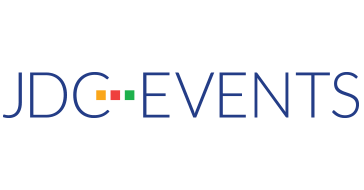10 Feb How to Measure an Event’s Success
It’s a wrap. You think your event was successful – it felt successful – but how can you know for sure whether it achieved its purpose?
A crucial component of event planning is determining how you’re going to measure its success. Figuring this out in advance will help you determine what worked and what didn’t, and it will allow you track your growth year on year. While some questions yield hard numeric answers (Did we meet our revenue goals?), other elements are harder to pin down (Were our sponsors satisfied?).
Finding ways to quantitatively measure these less-tangible elements helps paint a more refined picture of the event’s success.

Event Success Metrics to Consider
Utilize metrics throughout the entire planning cycle to determine the best approach, guide the planning process, and gauge your overall effectiveness. The planning phase allows you to capture critical quantitative data such as registration numbers and sales.
You should also consider engagement metrics, which start at the very beginning through post-event. When you incorporate engagement metrics you improve your chance of success, since these metrics reflect how well the organizer is connecting with participants. Some of these metrics might be app features, such as chats, social media engagements (shares, downloads, likes), and demos. If you pair your engagement data with other measurements, such as registration figures or post-event surveys, you’ll be in a stronger position to effectively measure success.
The Experience
One intangible that’s important to measure is the event experience. Is your event delivering the transformative impact you hoped it would? As you think about this, consider the needs of all event stakeholders:
What do visitors want?
One of the best ways to evaluate whether your participants see value in their attendance is to send out a post-event survey. This helps you gauge their satisfaction and gather data to use when planning your next event. Send the survey immediately after the event to get reactions while they’re still fresh on the minds of participants.
Consider using the Net Promoter Score, which lets you see, based on a scale of 1-10, which of your respondents are unhappy to the point of potentially damaging your brand; satisfied but not necessarily loyal; or true brand enthusiasts who will promote your brand to others. Turn these numbers into tangible results by dividing the total number of your very satisfied respondents by your total event cost. Once you’ve done this, you’ll have a benchmark to measure against in future years. Ideally, you’ll want to see your cost per “very satisfied” participant lower with each event, providing you an ROI dollar value.
What do sponsors and exhibitors want?
Delivering for this group is essential. One way to measure results on their behalf is to provide them with data before, during, and after the event to help them better tailor their services to participants. That can be accomplished with tools like promo codes, which can be sent to specific audiences and tracked.
Sponsors and exhibitors welcome the opportunity to have their own page on the event’s website. Make it accessible with a click on the organization’s logo wherever it appears on the site, then share the engagement metrics with them to deliver measurable ROI. Including your sponsors and exhibitors in post-event surveys and sharing the data you collect can also help you build stronger relationships with them.

The Finances
Financial KPIs are one of the more tangible ways to measure outcomes.
Did you meet your revenue goal?
Be sure to properly tally all the income from the event to determine your financial outcomes. From sponsorships to tickets to new contracts, calculate all the hard dollars to ensure you have an accurate count of the revenue toward your goal. Compare your revenue to the total cost of producing the event to determine your profit and loss. Do this year over year to find ways to improve the ratio moving forward.
If you’re a nonprofit, did you break even?
For nonprofits, it can be especially important to have accurate numbers. If you’ve fallen shy of your goals, you may need to rely more heavily on donors to make up the difference. It can be difficult to justify holding future events if one designed to raise funds instead places a drain on resources.
If you’re a for-profit, did you meet the target margin?
Whether you met, exceeded, or fell short of your margin, look at your initial versus end goals to get an idea of whether the benchmarks were realistic or idealistic. Remember that some of your KPIs may include: number of new leads, new customers, new sales of a specific product, and even number of actual attendees compared to those who registered. If you fell short of the latter of these metrics – i.e. you lost an inordinate number of people between registration and check-in – examine why to determine what changes need to be made moving forward.

Ongoing Viability
An evaluation of an event’s success should consider the long-term outlook.
Will people want to come back next year?
Surveys can help you gather input on what event participants liked and didn’t like while also letting you gauge expectations and take suggestions for next year’s event.
Did your event move the needle in your industry?
If your event is intended to incite change, clearly articulate your concrete, achievable goals in advance. After the event has wrapped, look for news and activities that demonstrate that change is occurring. Then share that information with participants and your organization’s stakeholders – especially when you can connect the movement of the needle directly to your event. This clearly demonstrates your event’s value.
Did you connect with stakeholders before, during and after the event?
Some of your best dividends can come from staying connected to stakeholders throughout the year. Ideally, you began engaging participants well in advance of your event and kept them charged up during it through live reaction polls and other activities encouraging them to weigh in. But don’t forget to keep the engagement going in the days and months following the event to keep participants connected to your brand and get them excited about next year. The goal is for this year’s “after” to flow into next year’s “before” so that you create a sustainable cycle year on year.
In our next blog, we’ll talk about what it takes to sustain that cycle, turning one successful event into a healthy series of events.



